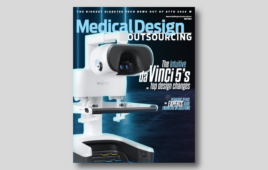Global medical device registrations can be time-consuming and costly for organizations. Here are some ways to make the process better.
Alex Butler, MasterControl

Photo by Artem Bali on Unsplash.
Obtaining clearance or approval for a medical device in the U.S. is cause for celebration. Obtaining clearance or approval for a medical device in multiple foreign countries is cause for jubilation.
On average, medtech firms see 177 days pass before receiving a 510(k) clearance from the FDA. In other regulated markets, the wait times can vary widely. In addition, the difference in requirements and product registration is a source of constant anxiety and pressure for regulatory, submissions, and quality professionals.
Every day a product is not on the market equates to lost income. Device manufacturers do not want to incur any unnecessary delays in the product registration process. Whether developing a new and innovative device or re-launching an iterative product, the key to a timely and successful regulatory submission is effective dossier management. To be effective, companies must address some common dossier management challenges.
1. Automate through the red tape
Every country or region has its own regulations for medical devices. Even when a company receives one CE mark for an entire region, such as the European Union (E.U.), they still have to mind the nuances of each market because certain countries require additional registration depending on the class of the device.
The challenges grow exponentially when the requirements are just different enough from market to market to create extra information demands. Imagine writing the same article 100 times, but you must change every numerical reference by five percent. Managing 100 iterations with the subtlest of changes from one document to another requires a special knack and a whole lot of patience.
The E.U.’s adoption of the new Medical Device Regulation (MDR) in 2017 came one year after the United Kingdom’s referendum that decided its withdrawal from the union. For medtech firms, the two developments meant twice as much new information and regulatory changes to monitor, and that’s just one part of the world. One must also keep up with new guidances issued by the FDA and any revisions to ISO 13485 international standards. The more markets targeted, the more regulations there are that must be adhered to and monitored.
Automating a paper-based or hybrid system is an important first step toward improving dossier management in particular and quality management in general. Because complex global regulations can be so difficult to manage, automated systems with reliable track records have proven to provide the safest and most economical means of addressing changes and improving dossier management. Instead of keeping massive volumes of information in electronic servers or in hard copy formats, choose a robust solution that will improve your control and tracking of documents, workflows, and timelines.
2. Make transparency the priority
Lack of transparency is one of the biggest stumbling blocks in a manual process due to the poor collaboration across departments that inevitably results from siloed information. It can be difficult for team members to be proactive if they cannot readily see the status of a project or monitor milestones. The importance of project visibility is multiplied for regulatory and quality managers dealing with several products and markets.
Reducing the number of inefficient manual processes can allow everyone involved to see all the countries and regions where all the products are being registered and the geographic locations where products are due for re-registration. This kind of real-time transparency is possible only with automation.
3. Connect disconnected systems
It is a common practice for companies to invest in multiple systems such as PLM, MES, ERP, and QMS based on specific needs of a business unit or division or team. When those systems can’t talk to each other, the teams and business units can’t work together efficiently. Worse, the different systems create silos that often result in miscommunication and wasted resources.
This causes massive headaches for the regulatory department. For example, consider a company headquartered in New York. The New York team is responsible for management of the dossier for a new dental implant system that is designed and developed by the Dublin team. The company’s E.U. authorized representative (AR), who is responsible for obtaining a CE mark, is based in Berlin. If each person in the chain is not on the same page at the same time, it is easy for any document change made by the Dublin team to fall through the cracks, leaving the New York team and the Berlin AR out of the loop and in a bind. Companies should not rely on spreadsheets, phone calls and emails. They need a system that holds all the regulatory data and documentation in one system.
Streamline opportunities
If there is one overarching change that companies can make to help ensure a product is launched in multiple geographies in a timely manner, it is removing paper-based or hybrid manual systems and switching to a fully automated system. It is the first step to providing a single, manageable repository for all artifacts necessary for regulatory submissions.
Alex Butler is MasterControl’s manager of medical device solutions. He leads the development efforts for MasterControl Registrations. He’s also responsible for developing and improving other software solutions, including MasterControl Customer Complaints, MasterControl Bill of Materials (BOM), MasterControl Projects, MasterControl Risk Management, and MasterControl PDM Connector. His medical device experience includes working as a product development manager for Opal Orthodontics, a division of Ultradent Products, where he helped launch several Class II medical devices.
The opinions expressed in this blog post are the author’s only and do not necessarily reflect those of MedicalDesignandOutsourcing.com or its employees.




![A photo of the Medtronic GI Genius ColonPro polyp detection system flagging a potential sign of colon cancer during a colonoscopy. [Photo courtesy of Medtronic]](https://www.medicaldesignandoutsourcing.com/wp-content/uploads/2024/04/Medtronic-GI-Genius-doctors-268x170.jpg)